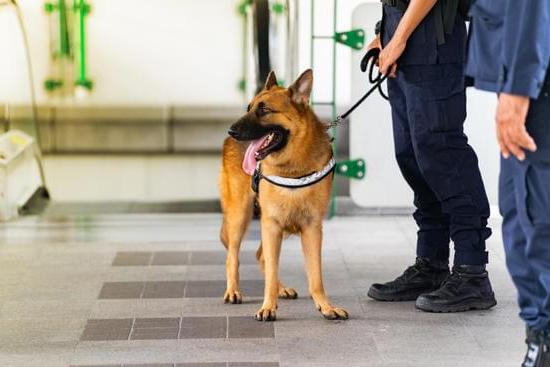The first step in effectively training your furry companion is finding a professional dog trainer who can guide you in this process. Whether you are dealing with behavioral issues or simply want to ensure obedience, a professional dog trainer can make all the difference in ensuring a well-behaved and happy pet. This article aims to provide you with a comprehensive guide on how to find and select the right professional dog trainer for your needs.
When it comes to training our dogs, many of us struggle with knowing where to begin. It’s often difficult to understand why our beloved pets behave the way they do, let alone how to correct any unwanted behavior. This is where professional dog trainers come in. They possess the knowledge, experience, and techniques needed to help us not only understand our dogs’ behavior but also modify it through proper training methods.
Hiring a professional dog trainer offers numerous benefits beyond just addressing problematic behavior. These experts are well-versed in different training approaches and have the skills necessary to improve obedience, increase socialization skills, and ultimately strengthen the bond between you and your four-legged friend. In addition, working with a professional allows you access to invaluable guidance and support throughout the entire training journey.
Finding the right professional dog trainer may seem like a daunting task at first, but by researching and considering key factors such as certifications, experience, and training methods utilized by potential trainers, you can ensure that both you and your dog will receive effective instruction. It’s important to note that every dog is unique in their temperament and required training needs; thus, selecting a trainer who understands these specific requirements is vital for achieving successful outcomes.
The benefits of hiring a professional dog trainer
Hiring a professional dog trainer can have numerous benefits for both you and your furry companion. A professional dog trainer is experienced and knowledgeable in canine behavior, and they can provide the necessary guidance to help address behavioral issues and improve obedience. Here are some of the key benefits of hiring a professional dog trainer:
1. Improved Behavior:
Professional dog trainers have the expertise to identify any behavior problems that your dog may be exhibiting. Whether it’s excessive barking, aggression, or separation anxiety, a trainer can work with you and your dog to address these issues effectively. They will tailor their training methods to suit your dog’s individual needs, providing positive reinforcement techniques to encourage good behavior.
2. Enhanced Obedience:
Training your dog to follow commands is not only essential for their safety but also for creating a harmonious relationship between you and your furry friend. A professional dog trainer has the knowledge and experience to teach your dog basic obedience commands such as sit, stay, come, and heel. They will use proven training methods to ensure that your dog understands and responds consistently to these commands.
3. Stronger Bond:
Working with a professional dog trainer allows you to build a stronger bond with your furry companion. The training sessions provide an opportunity for you and your dog to communicate effectively, understand each other better, and establish trust. This bond formed through training helps create mutual respect between you and your pet, making everyday interactions more enjoyable.
To unlock these benefits and set yourself up for success in finding the right professional dog trainer for your four-legged friend, it is important to assess your specific training needs based on your dog’s temperament and requirements. Understanding what areas of behavior or obedience you would like to focus on will help guide you in selecting the most suitable trainer who specializes in addressing those specific issues.
Assessing your dog’s training needs
When it comes to getting a professional dog trainer, it is essential to assess your dog’s training needs. Every dog is unique, and understanding their temperament and specific training requirements is crucial in finding the right trainer. This section will provide valuable insights on how to evaluate your dog’s training needs effectively.
Understanding your dog’s temperament
Before engaging a professional dog trainer, it is important to have a deep understanding of your dog’s temperament. Is your dog anxious or timid? Or are they energetic and easily distracted?
Knowing your dog’s temperament will help you select a trainer who has experience working with dogs of similar nature. Some trainers specialize in working with reactive dogs, while others might excel in training high-energy breeds. By recognizing your dog’s temperament traits, you can ensure that the trainer you choose has the expertise necessary to work successfully with them.
Identifying specific training requirements
In addition to assessing temperament, pinpointing specific training requirements for your furry friend is crucial. Determine what behaviors or obedience skills need improvement. Does your dog need help with basic commands such as sit, stay, or come? Maybe they need assistance with leash walking or socialization skills. Understanding the areas where your dog requires guidance will aid in finding a professional trainer who can address these specific needs effectively.
Consider any behavioral issues that may need attention as well. Does your pup struggle with separation anxiety or aggression towards other dogs? These issues require trainers who specialize in behavior modification techniques and have experience dealing with similar cases. Identifying these specific requirements will enable you to select a professional who possesses the appropriate knowledge and skills to tackle them head-on.
By taking the time to assess your dog’s temperament and specific training needs, you can narrow down potential candidates for professional trainers who are best suited for your four-legged companion. Doing this groundwork ensures that both you and your furry friend get the most out of the training experience.
Researching and selecting the right professional dog trainer
Researching and selecting the right professional dog trainer is a crucial step in ensuring successful training for your furry friend. There are several factors to consider when choosing a dog trainer, including their certifications, experience, and training methods.
Certifications play an important role in identifying the qualifications and knowledge of a professional dog trainer. Look for trainers who have obtained certifications from reputable organizations such as the Certification Council for Professional Dog Trainers (CCPDT) or the International Association of Animal Behavior Consultants (IAABC). These certifications demonstrate that the trainer has met certain standards of expertise in dog training.
Experience is another crucial factor to consider when selecting a professional dog trainer. A trainer with years of experience has likely worked with a variety of dogs and can adapt their training techniques to different temperaments and learning styles. They have also likely encountered various behavioral issues and have developed effective strategies for addressing them.
Training methods used by a dog trainer are also important to consider. It’s essential to find a trainer whose methods align with your own beliefs about dog training. Some trainers use positive reinforcement techniques, which involve rewarding desired behaviors, while others may utilize more aversive methods. Research different training approaches and choose one that you feel comfortable with and believe will be effective for your dog.
When researching potential dog trainers, it’s beneficial to read reviews or ask for recommendations from other dog owners who have used their services. This can provide insight into the trainer’s effectiveness, professionalism, and rapport with both dogs and owners.
Overall, taking the time to thoroughly research and select a professional dog trainer who aligns with your goals and values will greatly increase the chances of successful training for your beloved pet.
| Factors | Considerations |
|---|---|
| Certifications | Look for certifications from reputable organizations such as CCPDT or IAABC |
| Experience | Choose a trainer with years of experience working with different dogs and behavioral issues. |
| Training Methods | Consider whether the trainer uses positive reinforcement or aversive techniques. |
| Reviews and Recommendations | Read reviews and ask for recommendations from other dog owners. |
Setting realistic goals and expectations
Setting realistic goals and expectations is crucial when it comes to dog training. It’s important to understand what can be achieved in a certain timeframe and what milestones are realistic for your dog. By having clear goals and expectations, you can better track your dog’s progress and ensure that both you and your trainer are on the same page. Here are some guidelines on setting achievable milestones and the time frame for dog training:
- Identify specific behaviors: Before starting the training process, it’s essential to identify the specific behaviors you want your dog to learn or improve upon. This could include commands like sit, stay, or heel, as well as addressing any behavioral issues such as jumping or leash pulling. By listing these behaviors, you can set clear goals for your dog’s training.
- Break down training into smaller steps: Training should be broken down into smaller steps or tasks that gradually lead up to the desired behavior. For example, if you want your dog to learn how to sit on command, you can start by rewarding them for simply looking at you when you say “sit.” Then, gradually increase the criteria by rewarding them for shifting their weight back or lowering their hindquarters until they fully sit.
- Consider your dog’s individuality: Each dog is unique and learns at their own pace. Factors such as breed, age, previous experiences, and temperament can influence how quickly a dog learns new behaviors. It’s important to take these factors into account when setting goals and expectations. Discuss them with your professional trainer so they can tailor the training plan accordingly.
- Be patient and flexible: Remember that learning takes time and consistency. While some dogs may respond quickly to training, others may require more time and repetition. Be patient with your furry companion during the process and adjust your expectations as needed.
By setting realistic goals and expectations for your dog’s training, you’ll create a more positive learning experience for both of you. Remember to celebrate small achievements along the way and communicate openly with your professional trainer about any adjustments or concerns. With time, patience, and consistency, you’ll be well on your way to seeing positive changes in your dog’s behavior and obedience.
The different types of professional dog trainers
When it comes to finding a professional dog trainer, it’s important to understand that not all trainers are the same. There is a wide variety of training specialties and approaches available, each catering to different dogs and their unique needs. By exploring these different types of professional dog trainers, you can find the one that aligns with your goals and your dog’s personality.
One type of professional dog trainer is the obedience trainer. These trainers focus on teaching your dog basic commands and manners, such as sit, stay, and come. They may use reward-based methods or clicker training to reinforce positive behavior. Obedience trainers are great for young puppies or dogs that need a strong foundation in basic obedience skills.
Another type of professional dog trainer is the behaviorist. Behaviorists specialize in addressing specific behavioral issues, such as separation anxiety, fear aggression, or leash reactivity. They will assess your dog’s behavior and work closely with you to develop strategies for modifying unwanted behaviors. Behaviorists often use techniques such as desensitization and counterconditioning to help dogs overcome their fears or anxieties.
For those interested in competitive sports or working roles for their dogs, there are also specialized trainers available. These include agility trainers, who teach dogs how to navigate obstacle courses with speed and precision; search and rescue trainers, who prepare dogs for finding missing persons; and service dog trainers, who train dogs to assist individuals with disabilities.
It’s crucial to do thorough research when selecting a professional dog trainer based on their specialty and approach. Each type of trainer has different qualifications and expertise in their respective fields. Consider factors such as certifications, experience working with similar breeds or behavioral issues, and training methods used by the trainer.
Finding the right professional dog trainer for your furry companion is essential in ensuring successful training results. Whether you’re looking for obedience training or specialized behavior modification, understanding the different types of professional dog trainers will help you make an informed decision and find the perfect fit for your dog’s needs.
Understanding the cost and financial investment of professional dog training
Professional dog training can be a valuable investment in your dog’s behavior and obedience. However, it’s important to understand the cost and financial aspects associated with hiring a professional dog trainer. This section will discuss the factors that affect pricing and provide budgeting tips to help you make an informed decision.
Factors Affecting Pricing
There are several factors that can influence the cost of professional dog training services. One of the main factors is the type and level of training required. Basic obedience training may be less expensive compared to specialized training for behavioral issues or competition-level training. The duration of the training program can also impact the cost. Longer programs or individualized sessions may come with a higher price tag.
Another factor that affects pricing is the experience and credentials of the dog trainer. Trainers who have extensive experience, certifications, and proven track records may charge higher fees for their expertise. Additionally, location can play a role in pricing variations. Dog trainers in urban areas or regions with a higher cost of living may have higher rates compared to those in rural areas.
Budgeting Tips
Before enlisting the services of a professional dog trainer, it’s important to assess your budget to determine what you can afford. Consider how much you are willing and able to devote towards dog training. Research different trainers and compare their prices, but avoid solely focusing on cost as the deciding factor.
It may be helpful to inquire about package deals or discounts for multiple sessions upfront, as some trainers offer discounted rates for longer-term commitments. Additionally, consider alternative options such as group classes or online courses which tend to be more affordable than one-on-one sessions.
Budgeting for ongoing maintenance after the initial training is also crucial. Dogs thrive on consistency, so continuing reinforcement through practice at home or periodic follow-up sessions with the trainer may be necessary to maintain progress.
By understanding these factors affecting pricing and implementing these budgeting tips, you can make an informed decision when selecting a professional dog trainer that fits within your financial means. Remember that investing in your dog’s training is an investment in their well-being and can lead to a happier and more harmonious relationship between you and your furry companion.
Questions to ask potential dog trainers
Background and Experience
When evaluating potential dog trainers, it is essential to inquire about their background and experience in the field. Ask about their education, certifications, and any specialized training they have received. A qualified professional should have a solid foundation in dog behavior and training techniques.
Furthermore, it is important to ask about their experience working with dogs similar to yours. For example, if you have a specific breed or age group that requires specialized training, make sure the trainer has experience in handling those types of dogs. Additionally, inquire about their success rate with previous clients and ask for references or testimonials from satisfied owners.
Training Methods
Another crucial aspect to consider when selecting a dog trainer is their training methods. Discuss the specific techniques they utilize and ensure they align with your training philosophy and goals for your dog. Some trainers may focus on positive reinforcement methods, while others might use a combination of positive and correction-based methods.
It is important to understand the potential impact of different training approaches on your dog’s behavior and well-being. Consider asking questions about how they address common behavioral issues or promote obedience in a humane way. Additionally, inquire about the use of tools such as choke chains or shock collars, as these can be controversial and may not align with your beliefs regarding animal welfare.
Class Structure and Environment
Inquire about the structure of the training sessions or classes offered by potential trainers. Ask how many dogs will be in each session and whether there will be individualized attention given to each participant. Understanding the class size will help you determine if your dog will receive adequate personalized instruction.
Additionally, ask about the training environment – whether it takes place indoors or outdoors – as this can influence your dog’s ability to concentrate during sessions. Find out if distractions are intentionally included as part of the training program to prepare your dog for real-life situations. Also, consider asking if the trainer uses any specific equipment or facilities that can enhance the training process.
Remember, selecting the right dog trainer is crucial for both you and your furry companion. Asking these important questions will help ensure a good fit and set you and your dog up for success in achieving your training goals.
Preparing for the training sessions
Creating a conducive and comfortable learning environment is crucial for effective dog training. Dogs need to feel safe and at ease in order to learn and retain new commands and behaviors. Here are some tips to help you prepare for the training sessions and create an optimal learning environment for your dog:
- Choose a quiet and distraction-free space: Find a location in your home or yard where there are minimal distractions. This will help your dog focus better on the training exercises. Remove any toys, noise-making objects, or other distractions that may divert your dog’s attention during the sessions.
- Use positive reinforcement techniques: Positive reinforcement is key to successful dog training. Make sure to have plenty of treats or rewards readily available during the sessions. Use treats that are high-value and appealing to your dog, such as small pieces of cooked chicken or freeze-dried liver treats. Rewarding your dog for correct behaviors will motivate them to continue learning.
- Maintain consistency: Consistency is essential in dog training. Create a routine around the training sessions by scheduling them at the same time each day. This will help establish structure and reinforce good behavior patterns in your dog.
In addition to these tips, it’s important to remember that every dog learns at their own pace, so be patient and understanding throughout the process. Celebrate small victories with praise and rewards, while also addressing any challenges or setbacks with patience and perseverance.
| Tips | Description |
|---|---|
| Choose a quiet and distraction-free space | Find a location without distractions to help your dog focus better |
| Use positive reinforcement techniques | Reward correct behaviors with high-value treats or rewards |
| Maintain consistency | Schedule training sessions at the same time each day to establish structure |
Assessing progress and maintaining training
Maintaining consistency and providing ongoing reinforcement are crucial aspects of dog training. It is important to regularly assess the progress of your dog’s training journey and make necessary adjustments to ensure continued success. Consistency helps reinforce desired behaviors, while ongoing reinforcement helps solidify these behaviors as long-term habits.
To assess progress, you can track your dog’s performance using objective measures such as obedience commands completed correctly, duration of focus during training sessions, or ability to perform specific tasks. Additionally, you should observe your dog’s behavior outside of structured training sessions, including interactions with other dogs and people. This will give you an overall picture of their progress in responding to commands and behaving appropriately.
It is also important to remember that maintaining training goes beyond the initial lessons. Reinforcement should continue throughout your dog’s life to prevent regression or the development of undesirable behaviors. Regular practice sessions can help reinforce known commands and introduce new ones, keeping your dog mentally stimulated and engaged.
| Assessment Measures | Description |
|---|---|
| Obedience Commands Completed Correctly | This measure tracks the number of commands that your dog follows accurately. |
| Duration of Focus | This measure assesses how long your dog can maintain attention during a training session. |
| Ability to Perform Specific Tasks | This measure evaluates your dog’s capability in executing more complex tasks or tricks. |
Consistency plays a vital role in reinforcing proper behavior. This means practicing commands consistently using clear cues and rewarding with treats, praise, or playtime. By consistently reinforcing positive behaviors and ignoring or redirecting undesired behaviors, you are helping your dog understand what is expected of them.
To maintain training effectively, it is essential to continue using the same training methods that have worked for your dog. Any changes in training techniques can confuse your dog and hinder progress. Consistency also extends to other family members or individuals involved in your dog’s care. It is crucial for everyone to be on the same page regarding commands, expectations, and rewards to avoid confusion and inconsistencies in training.
Conclusion
In conclusion, hiring a professional dog trainer can have a significant positive impact on your dog’s behavior and obedience. By understanding your dog’s temperament and specific training needs, you can find a qualified trainer who can address these issues effectively. When researching and selecting a professional dog trainer, it is essential to consider factors such as certifications, experience, and training methods to ensure they align with your goals and expectations.
Setting realistic goals and expectations is crucial in the training process. It is important to remember that dog training takes time and consistency. Discussing achievable milestones with your trainer will help you understand the timeframe for training and what progress to expect along the way.
There are various types of professional dog trainers, each specializing in different training approaches. Take the time to explore these options to find the best fit for your furry companion. Additionally, understanding the cost and financial investment of professional dog training is important so that you can budget accordingly.
Before committing to a specific trainer, it is crucial to ask them relevant questions that will determine their compatibility with you and your dog. This could include inquiries about their methods, experience working with dogs similar to yours, and their approach to addressing specific behavioral issues.
Once you have selected a professional dog trainer, it is important to create a conducive learning environment for your dog during training sessions. This includes providing appropriate space and removing distractions.
Finally, remember that assessing progress and maintaining training require consistency and ongoing reinforcement. The knowledge gained from working with a professional trainer should be applied consistently throughout your pet’s life.
With these key points in mind, taking the necessary steps to find a professional dog trainer for your furry companion will greatly benefit both you and your four-legged friend. By investing in proper training now, you are setting your dog up for success in the future by ensuring they are well-behaved and obedient members of society. So don’t hesitate any longer – start researching today.
Frequently Asked Questions
How do I find the right pet trainer for me?
Finding the right pet trainer for yourself requires some research and consideration. Start by asking for recommendations from friends, family, or your veterinarian. Look for trainers who have experience and specialize in the specific type of pet you have, whether it’s a dog, cat, bird, or other animal. It’s important to also consider their training methods and philosophy.
Some trainers use positive reinforcement methods, while others may rely on aversive techniques. Look for a trainer who aligns with your own values and approach to training. Additionally, it can be helpful to attend a class or observe a session with potential trainers to see if their style matches what you are looking for.
How do I choose a trainer?
Choosing a pet trainer involves several factors that should be carefully considered. First and foremost, ensure that the trainer has proper qualifications and certifications from reputable organizations. These certifications could include the Certification Council for Professional Dog Trainers (CCPDT) or the International Association of Animal Behavior Consultants (IAABC).
It’s also important to evaluate their experience working with animals similar to yours and inquire about any specialty areas they may focus on within training. Furthermore, consider their training methodology; look for trainers who use positive reinforcement techniques rather than aversive methods which can harm your pet’s well-being. Lastly, trust your gut instinct when choosing a trainer – go with someone who makes you feel comfortable and who you believe will provide effective results.
Can I train my dog myself?
Yes, it is possible to train your dog yourself. Many dog owners successfully train their pets at home using various resources available such as books, online tutorials, or instructional videos. However, it’s essential to keep in mind that proper education and guidance are crucial when training your own dog effectively and safely.
If you choose this route, make sure to thoroughly research positive reinforcement training techniques as these are generally considered the most humane and effective approach to teaching dogs new behaviors or commands. It can also be beneficial to attend basic obedience classes with your dog, led by a professional trainer, to gain additional guidance and support as you navigate the training process. Consistency, patience, and a well-structured training plan are key to successfully training your dog on your own.

Welcome to the blog! I am a professional dog trainer and have been working with dogs for many years. In this blog, I will be discussing various topics related to dog training, including tips, tricks, and advice. I hope you find this information helpful and informative. Thanks for reading!





